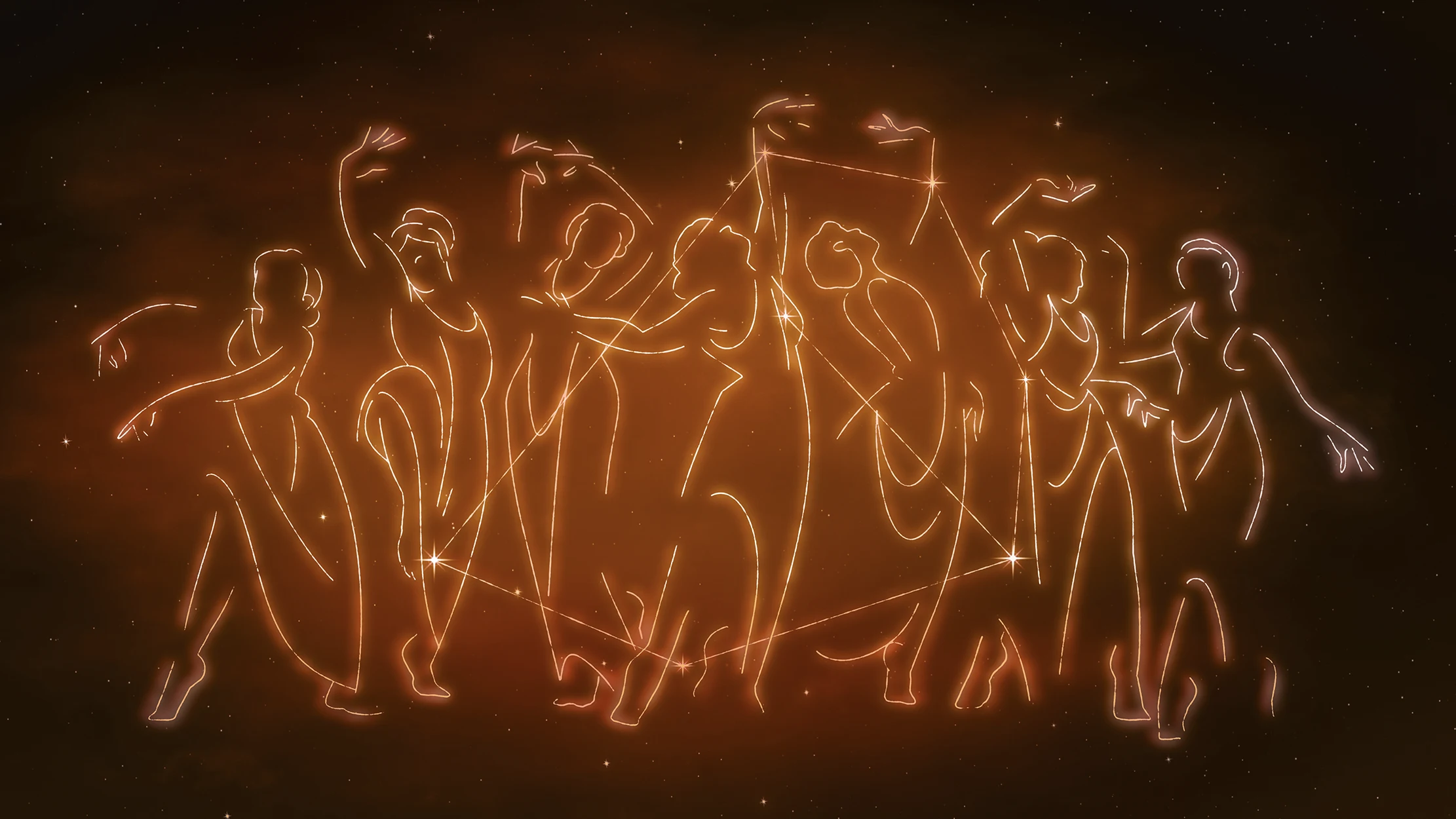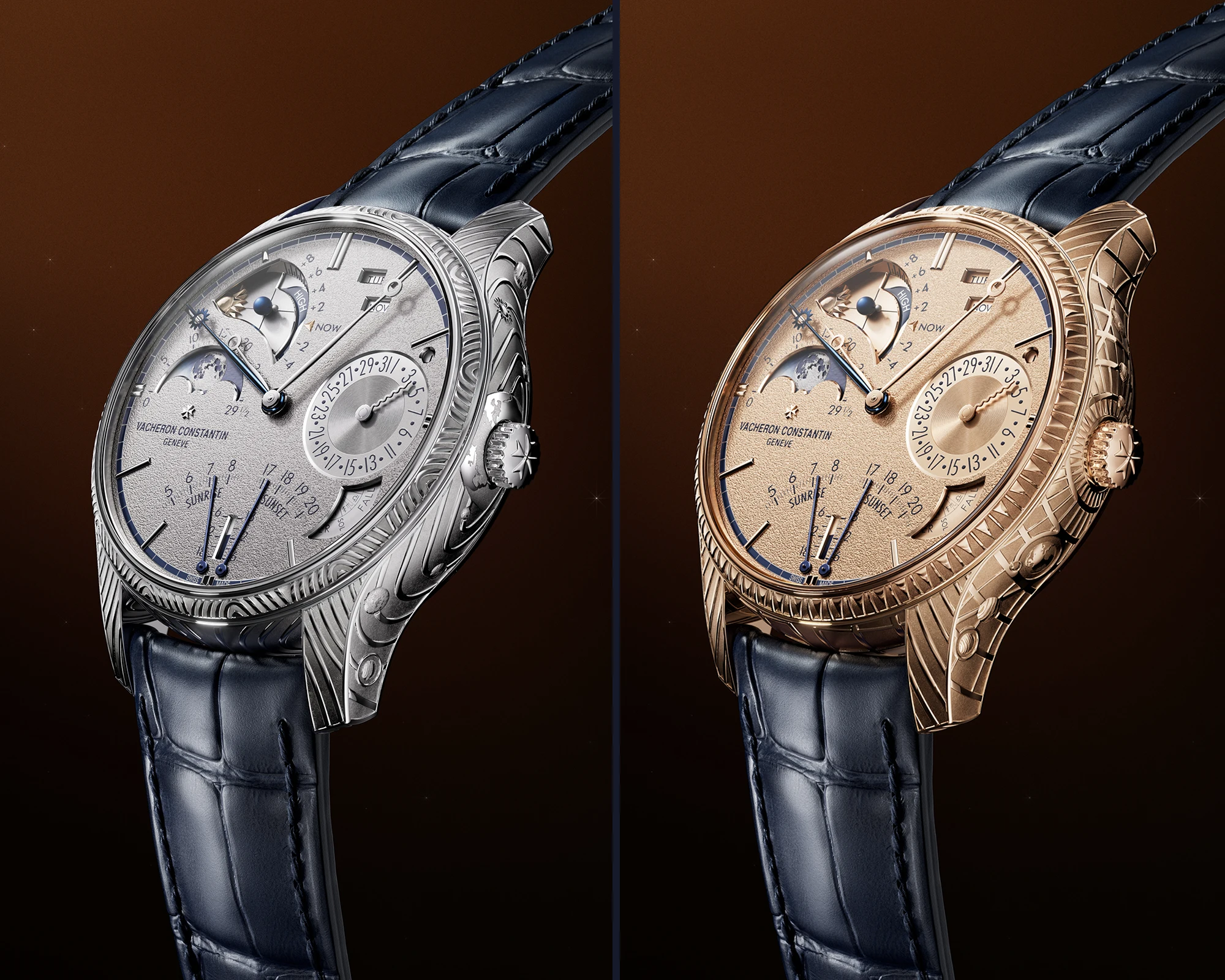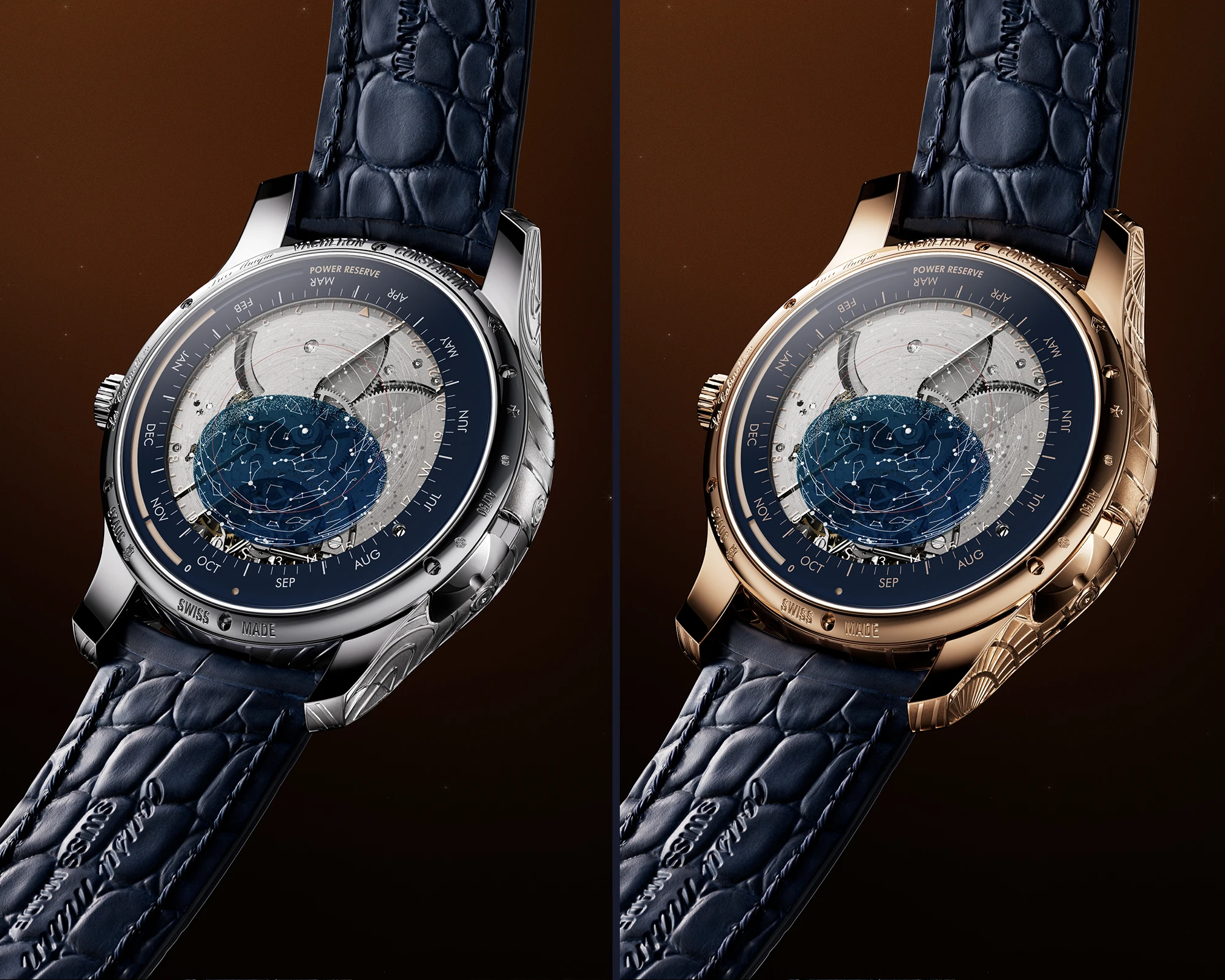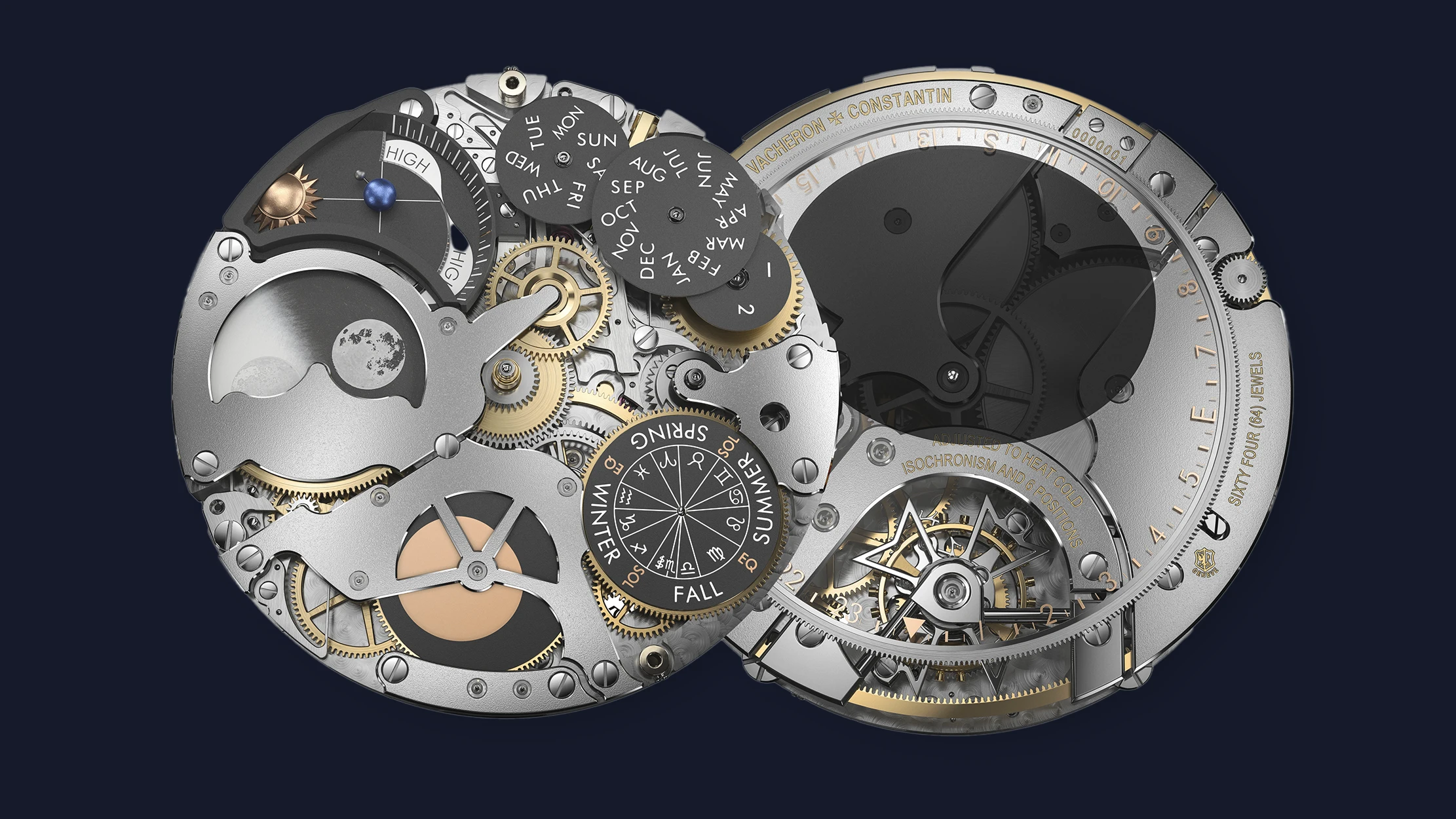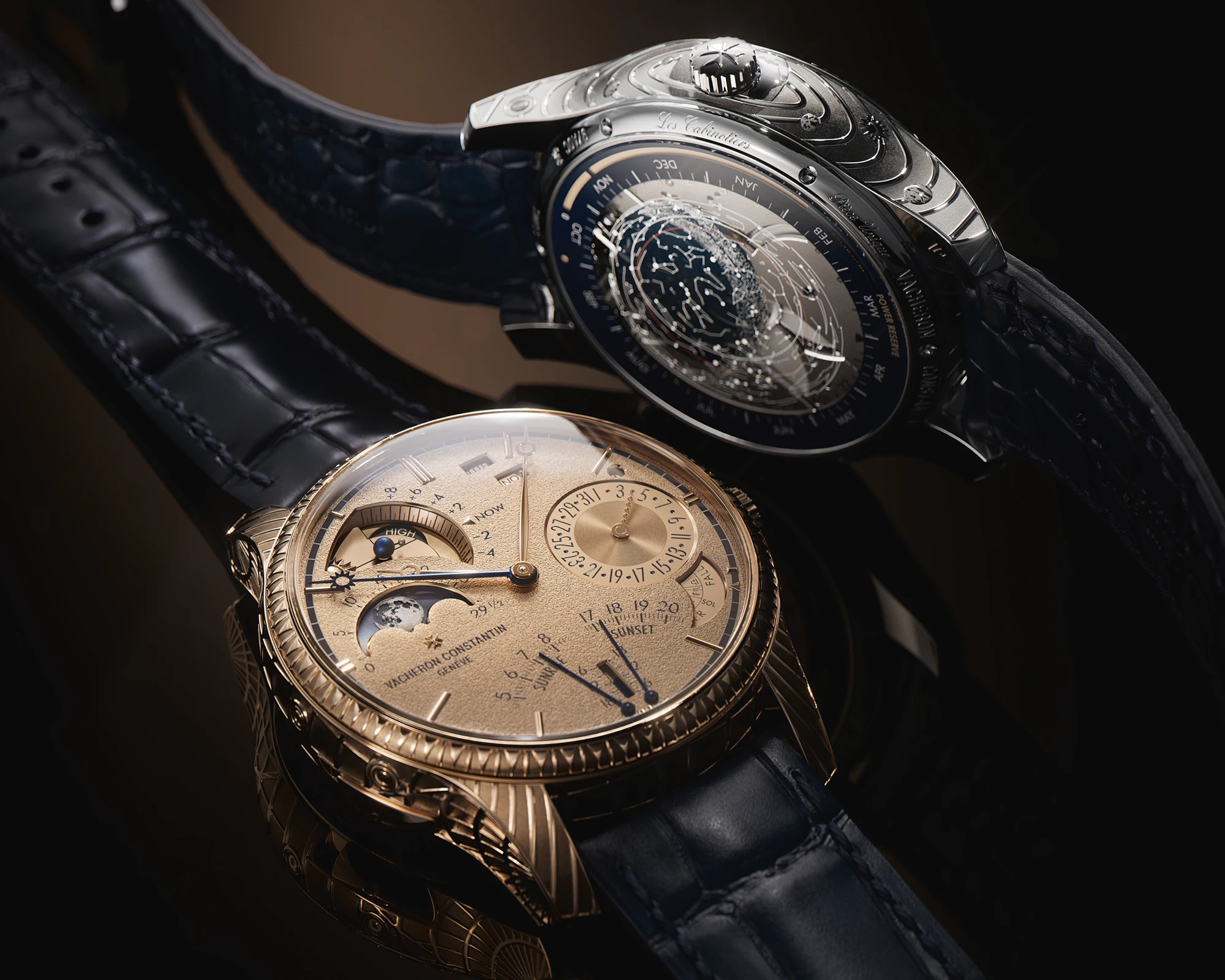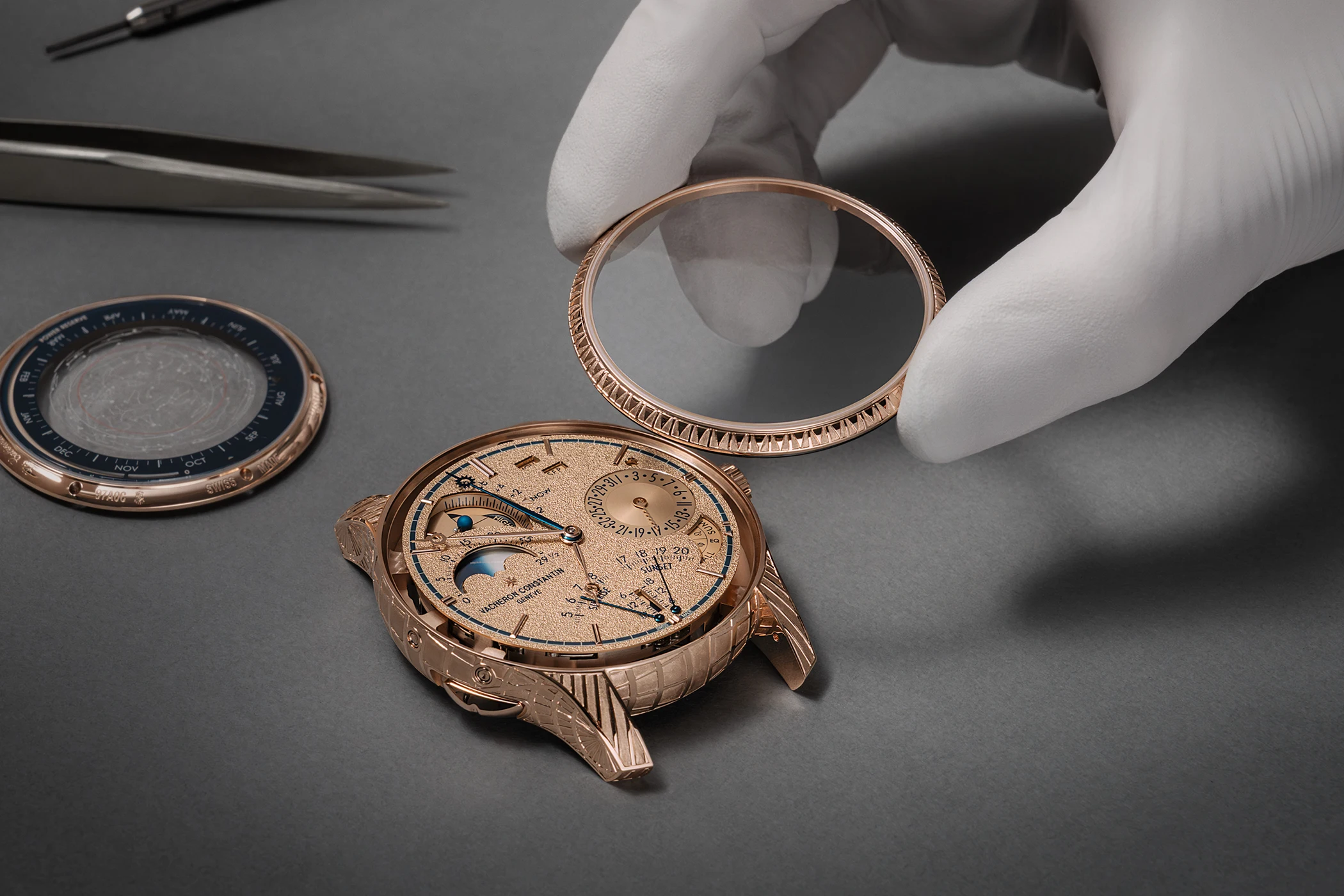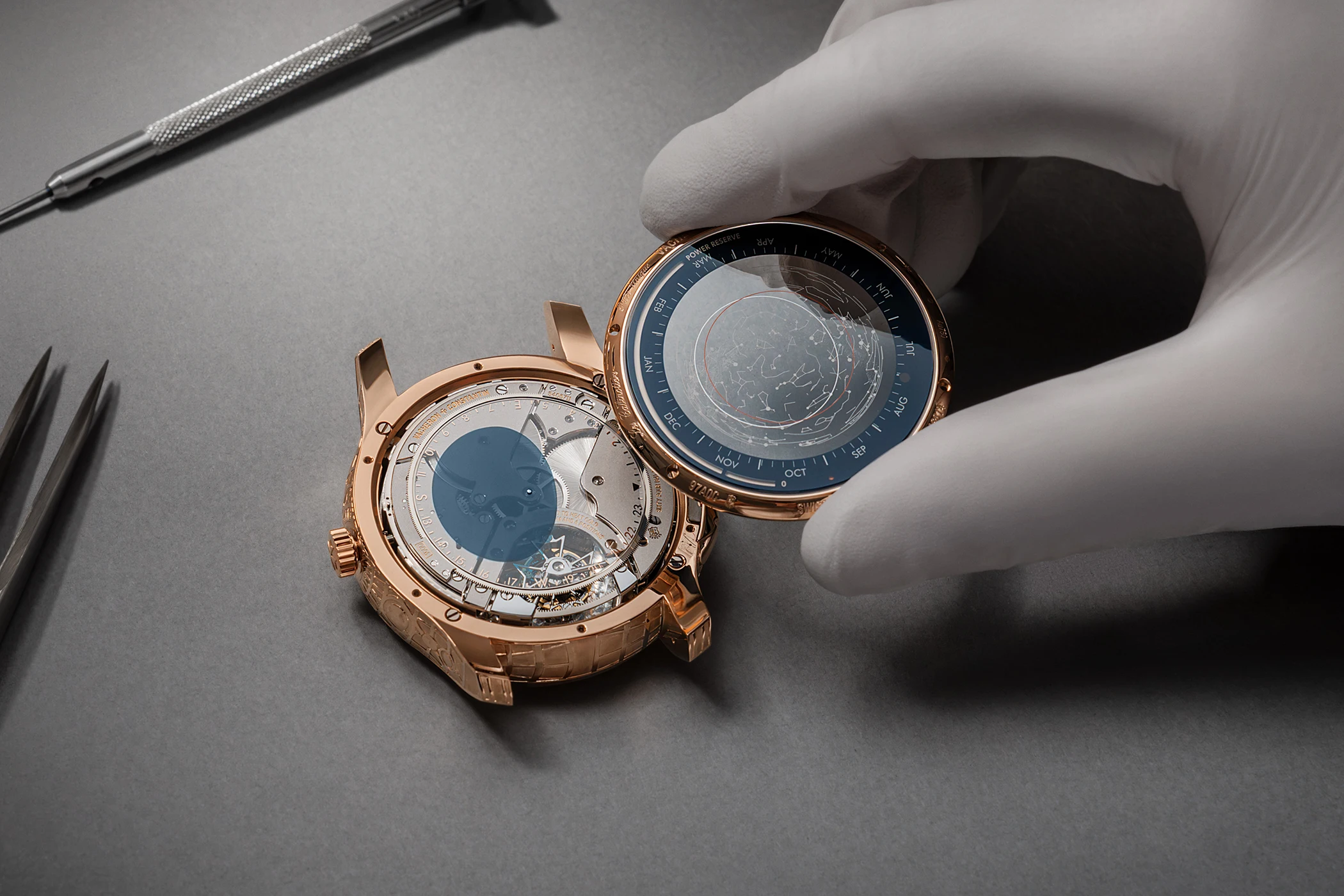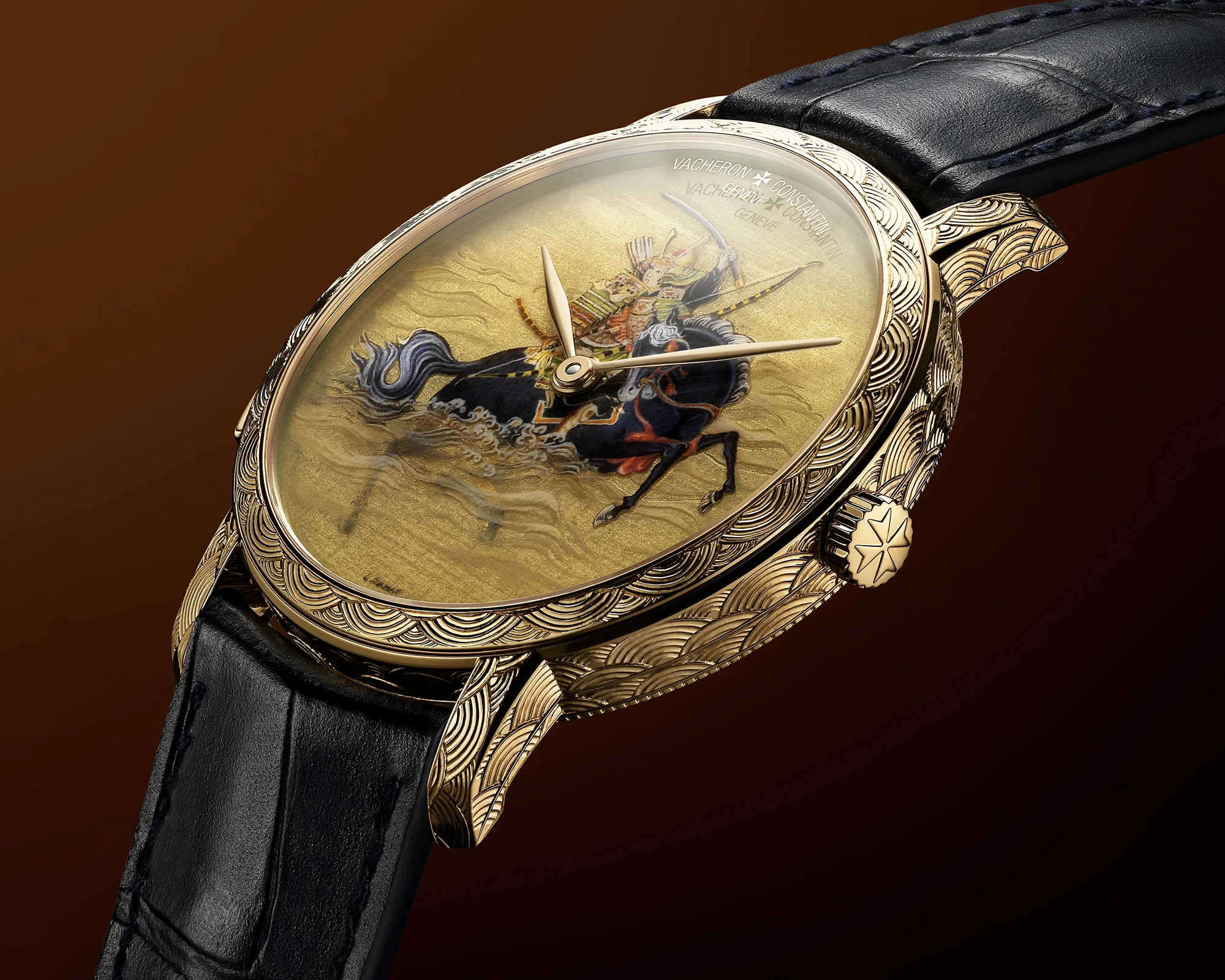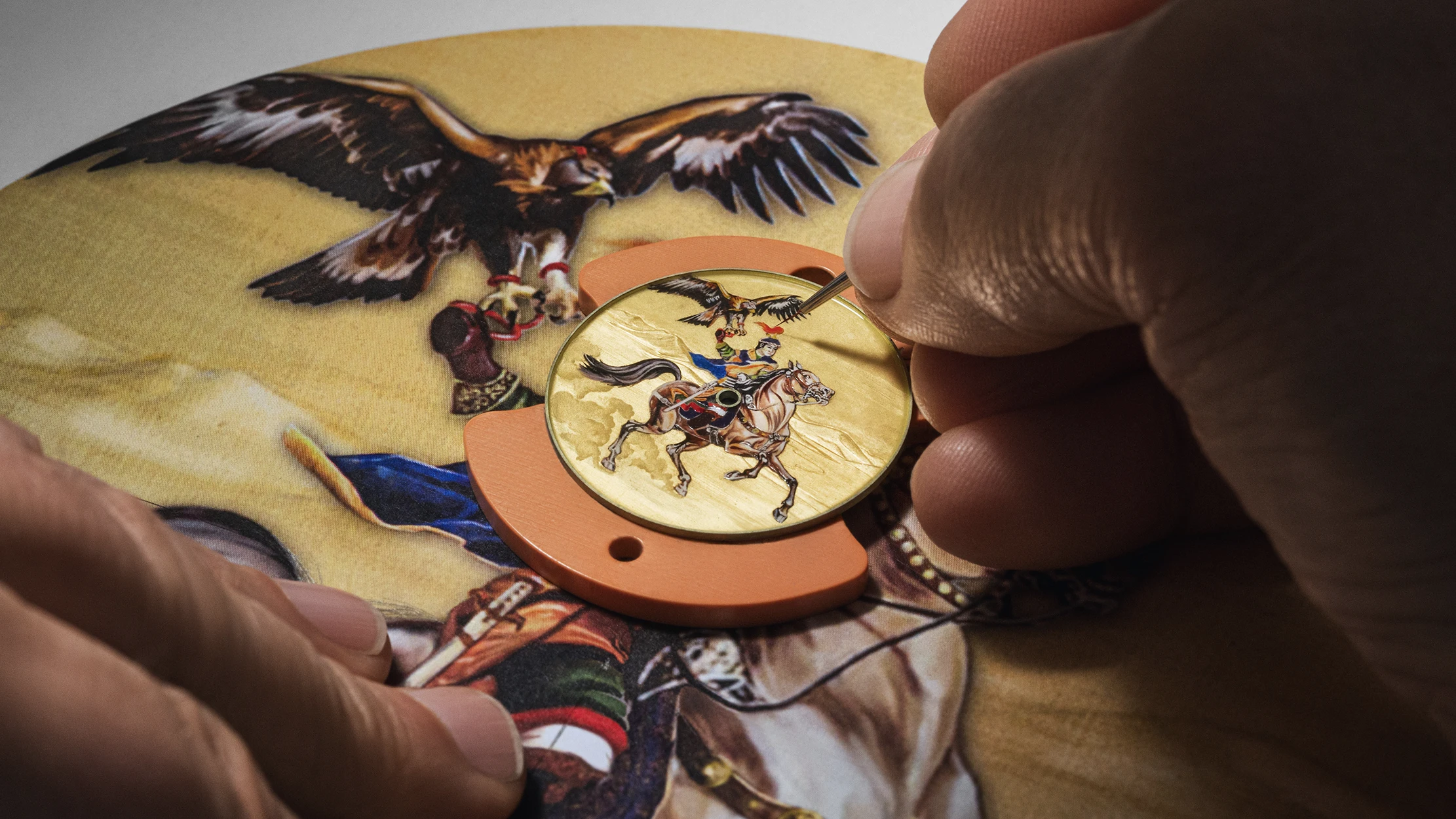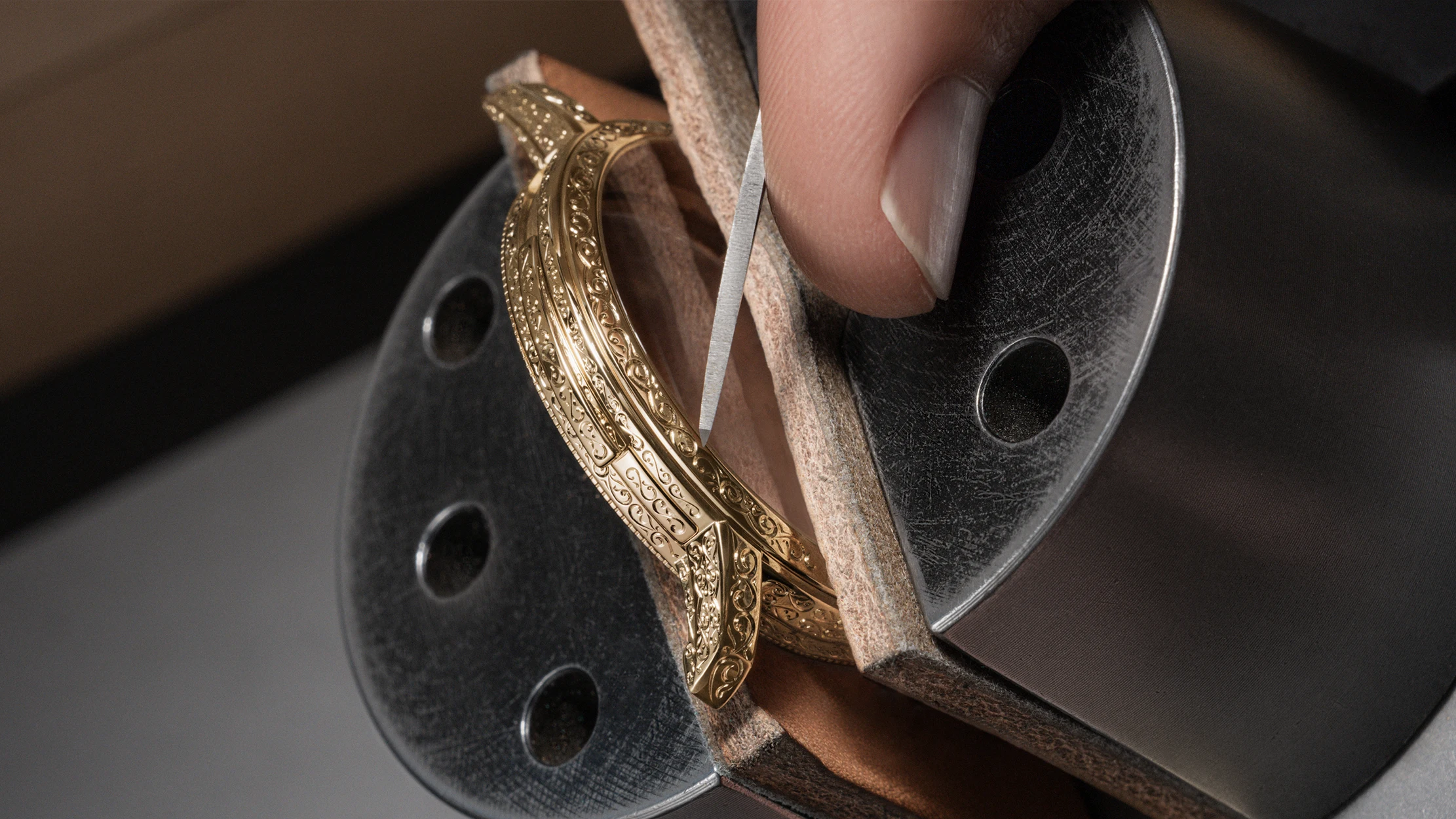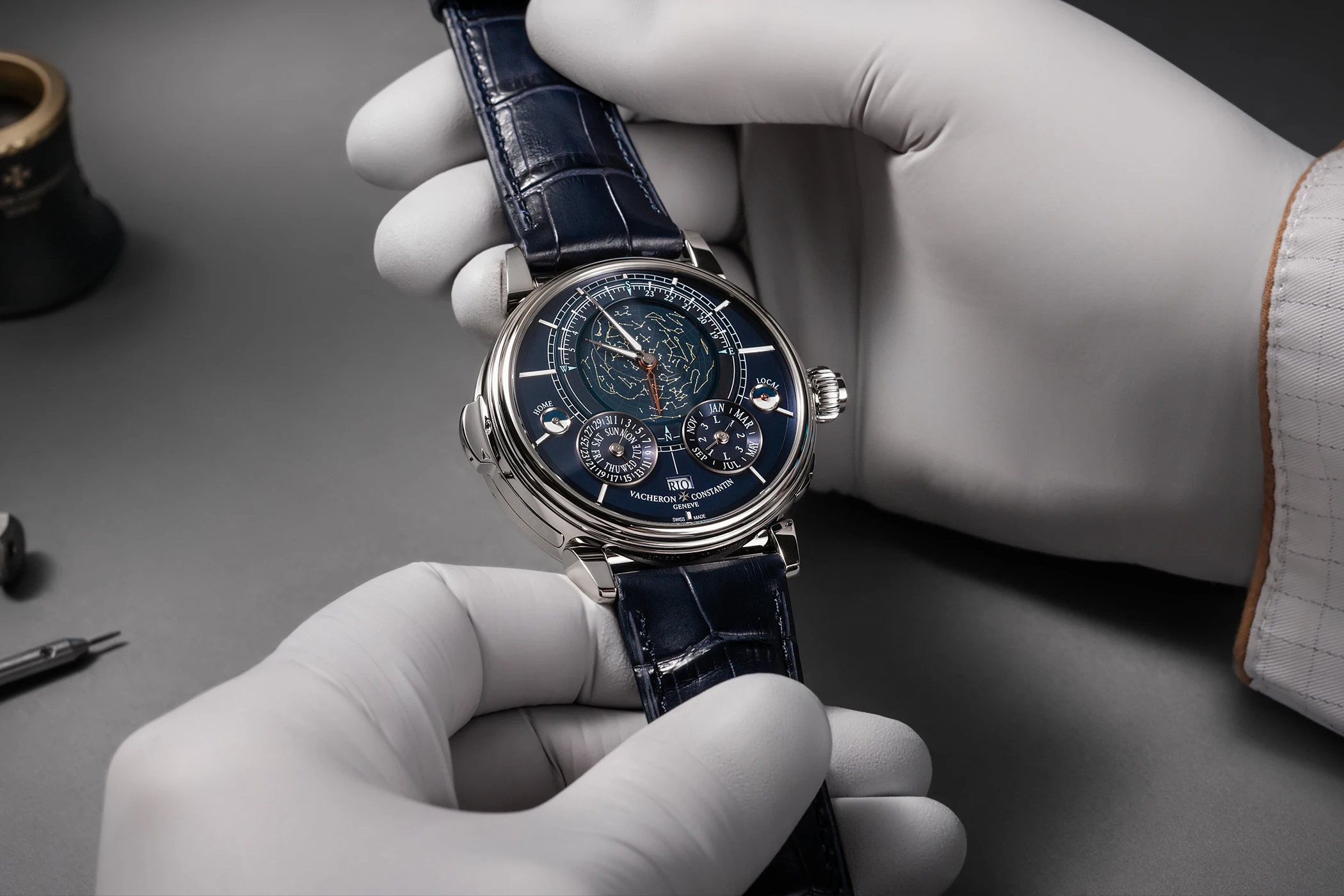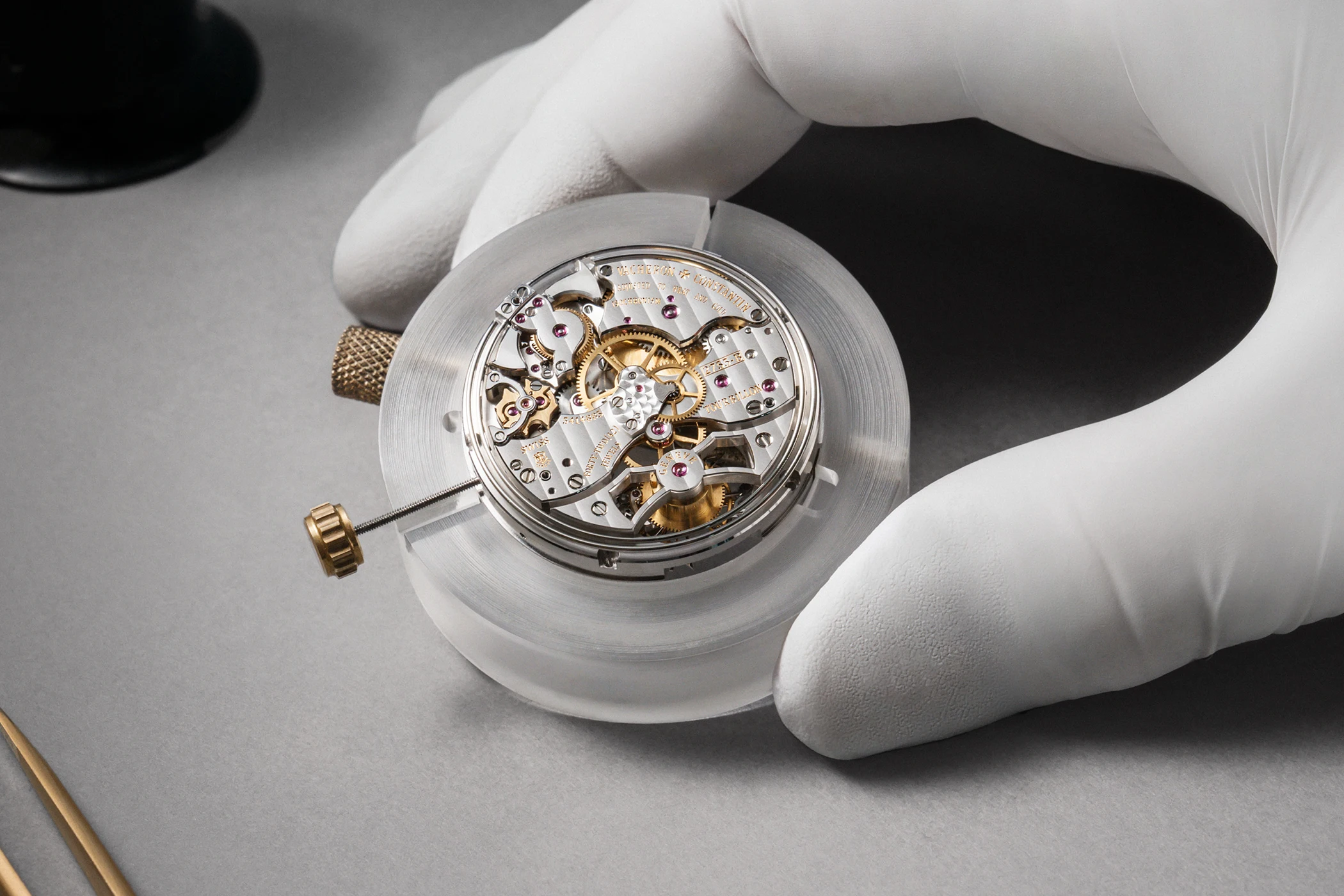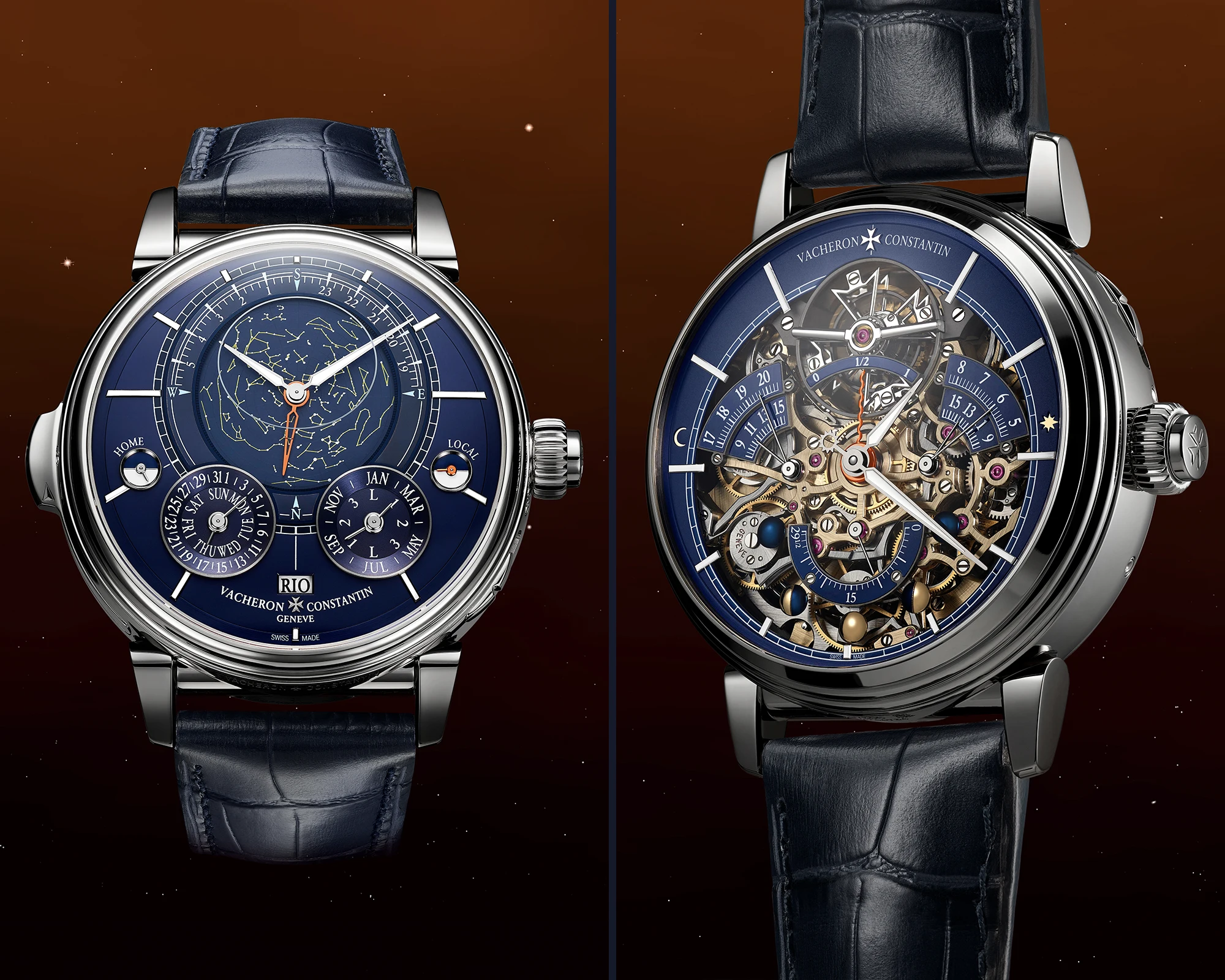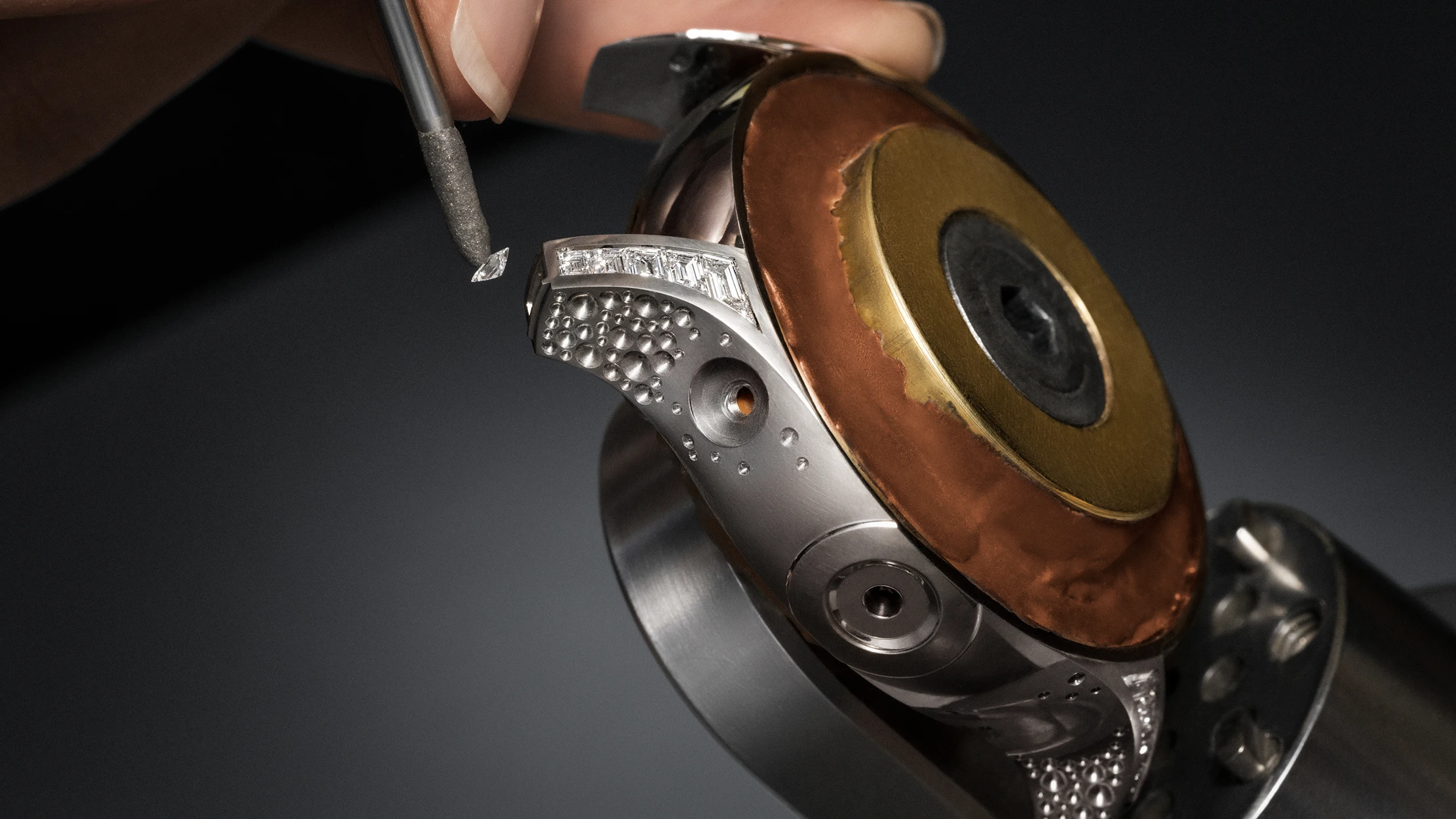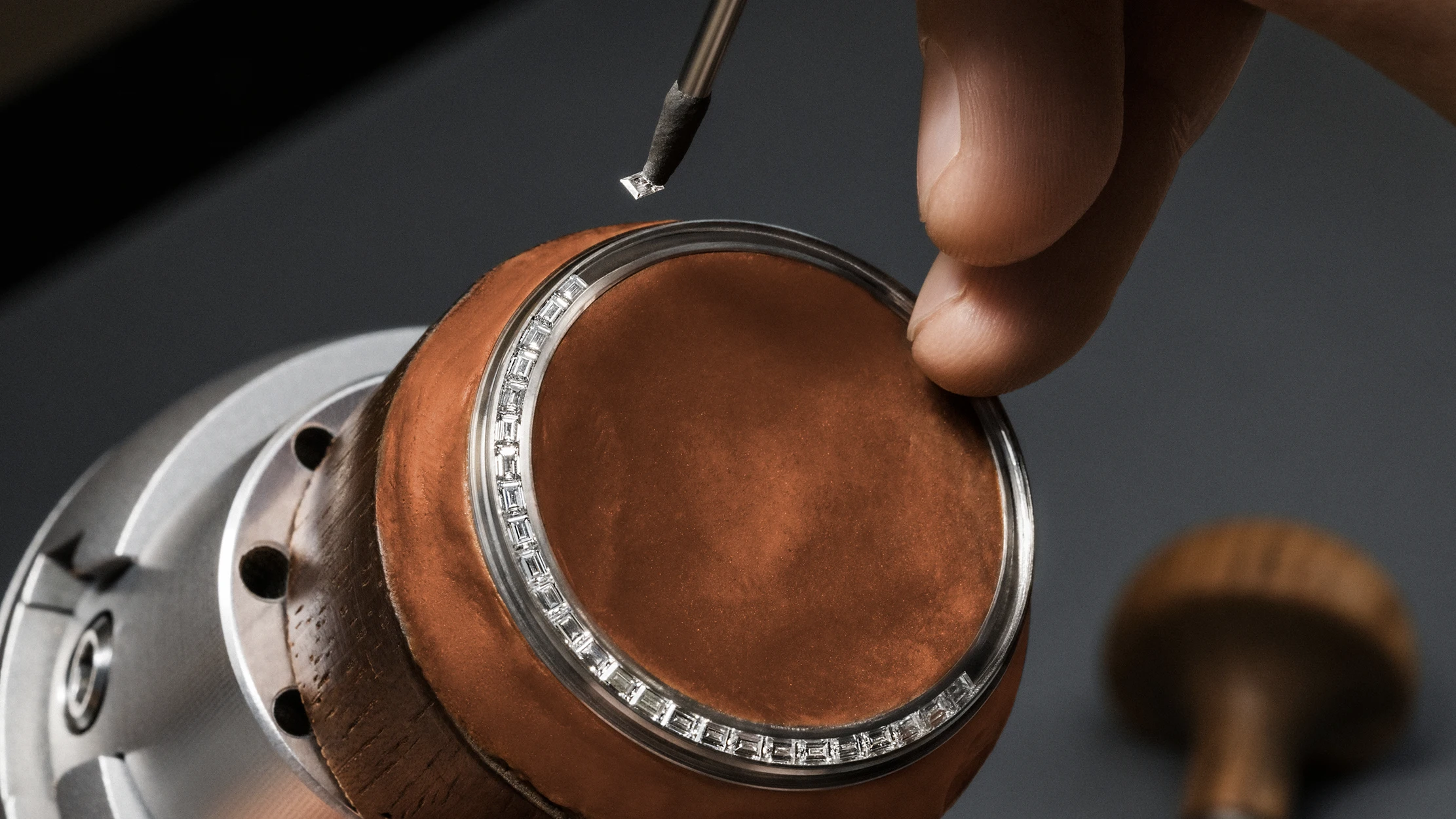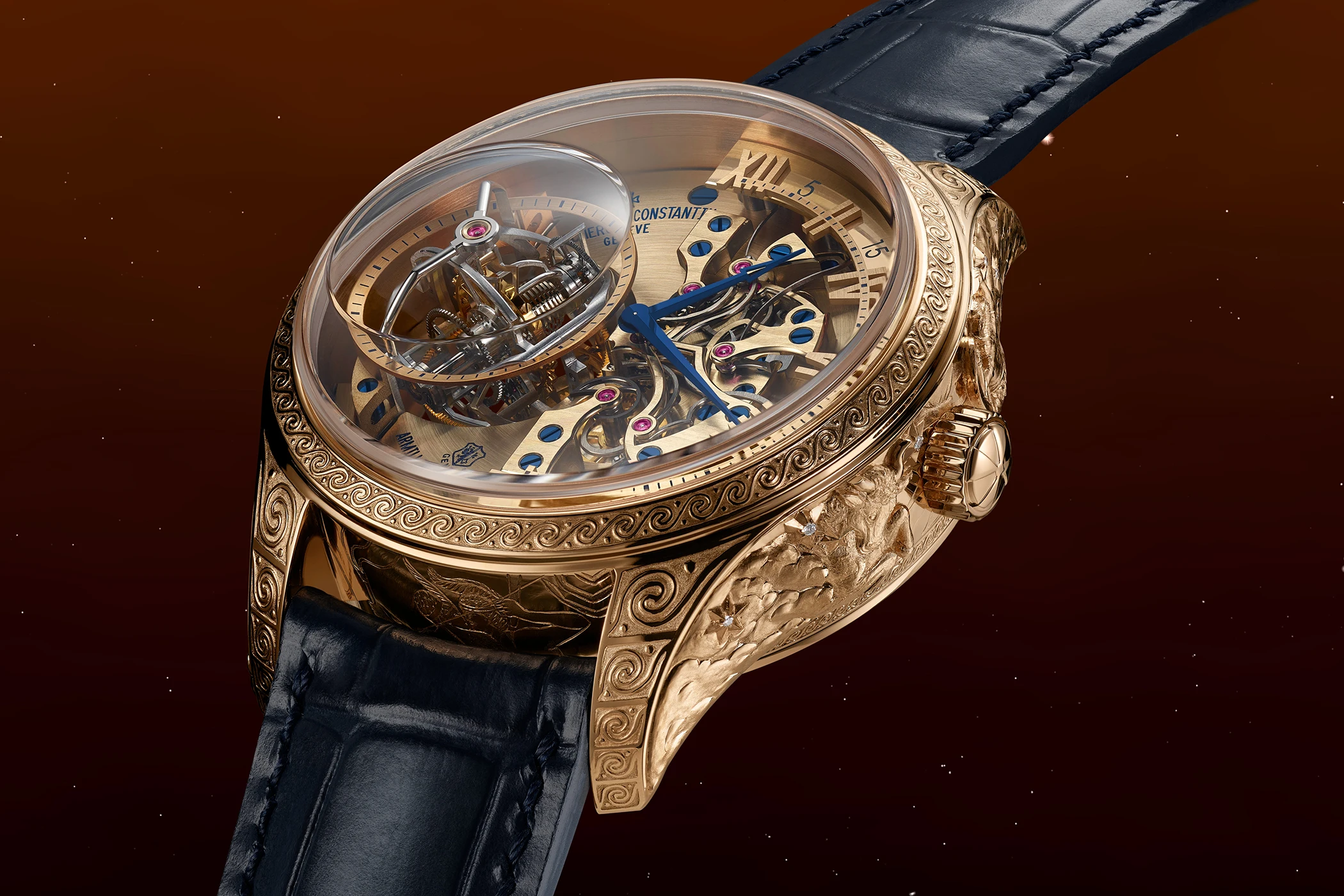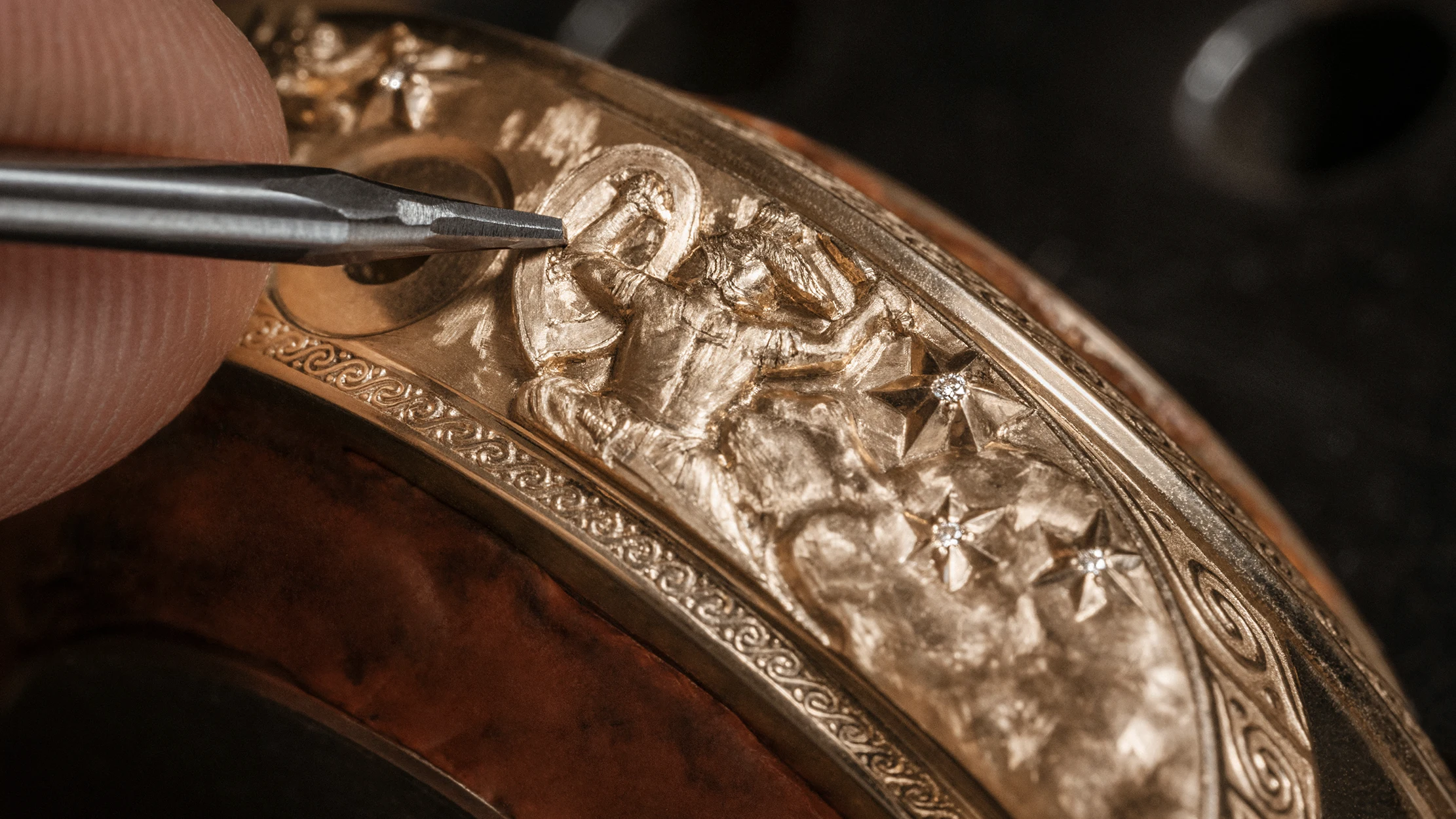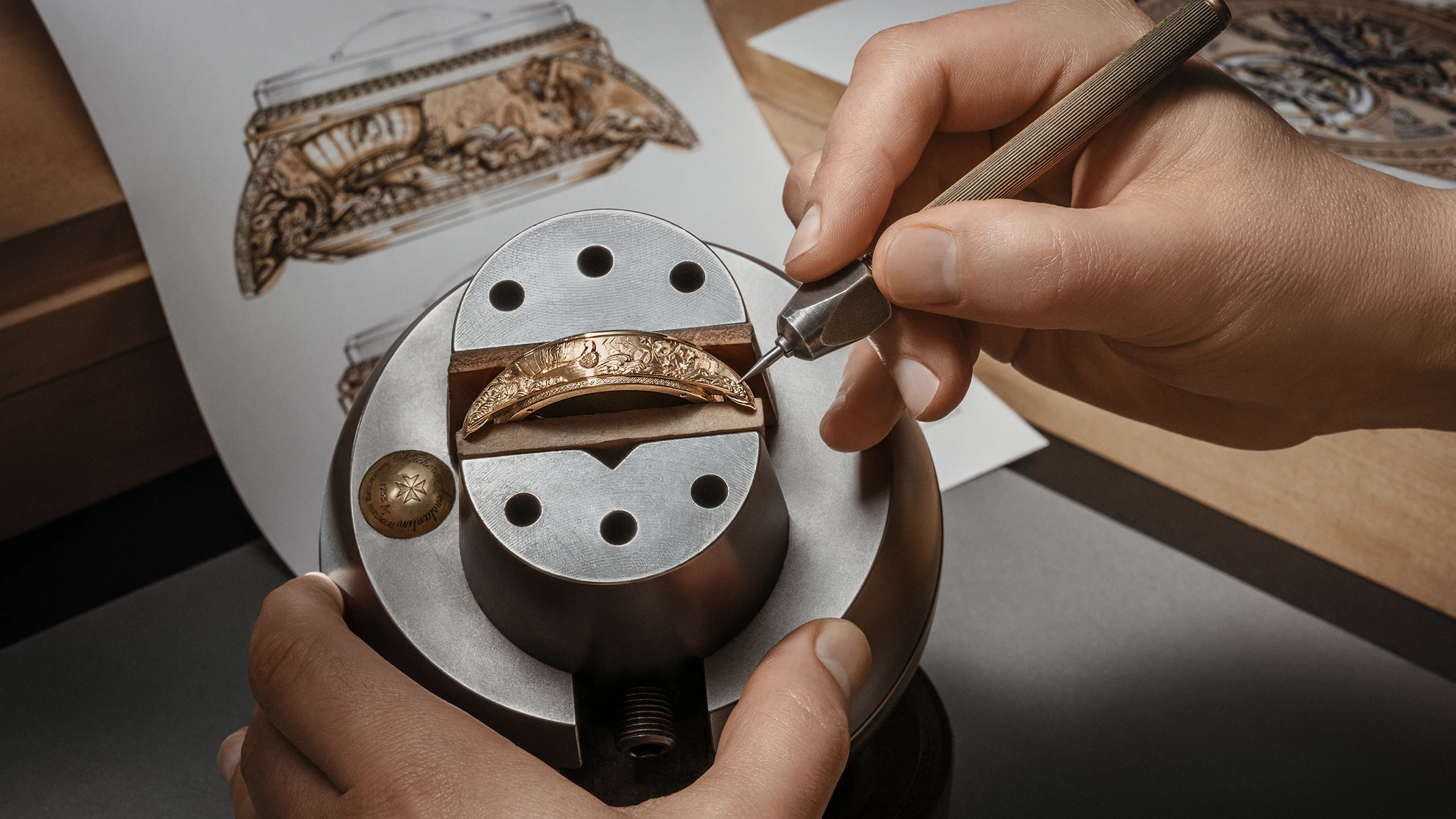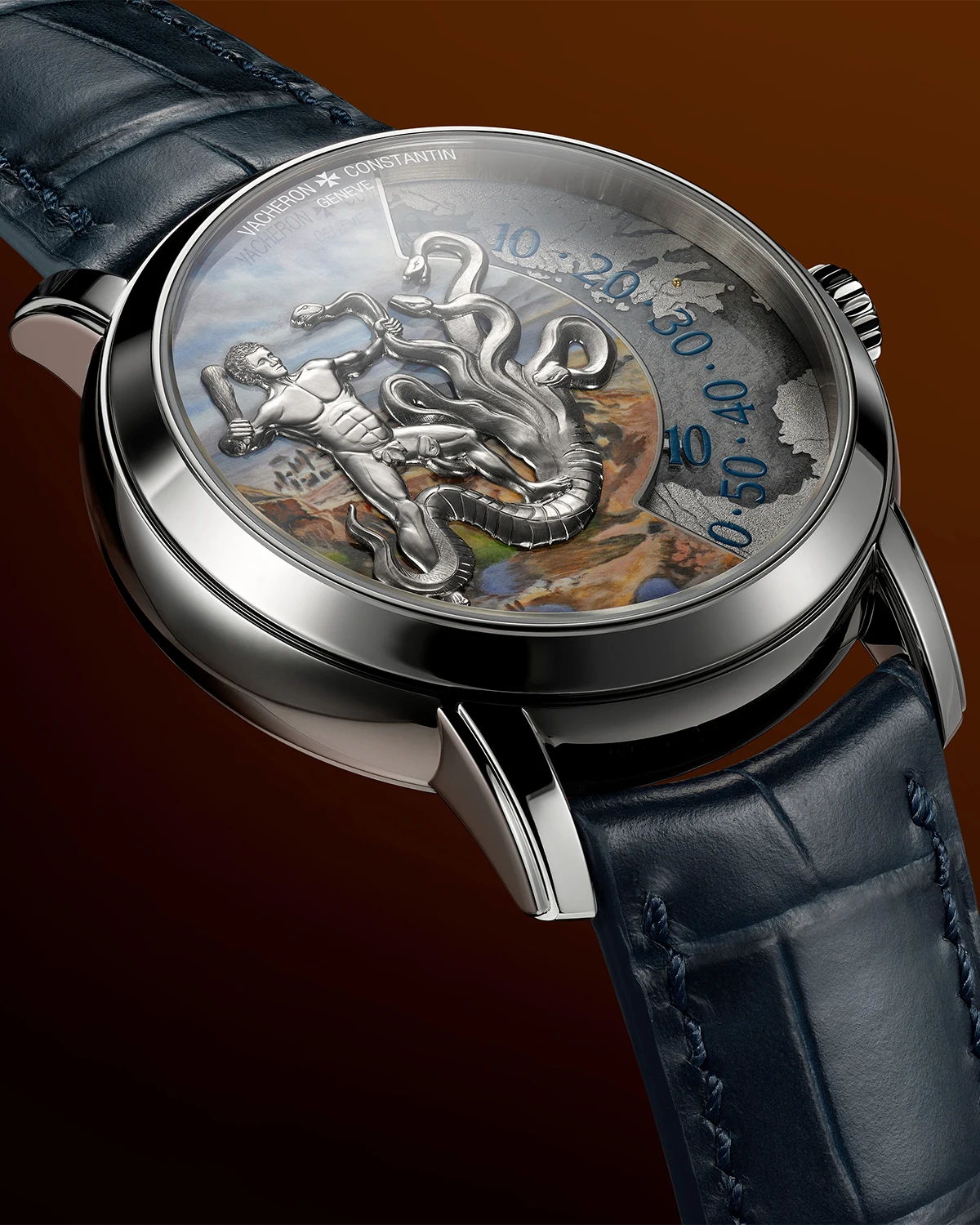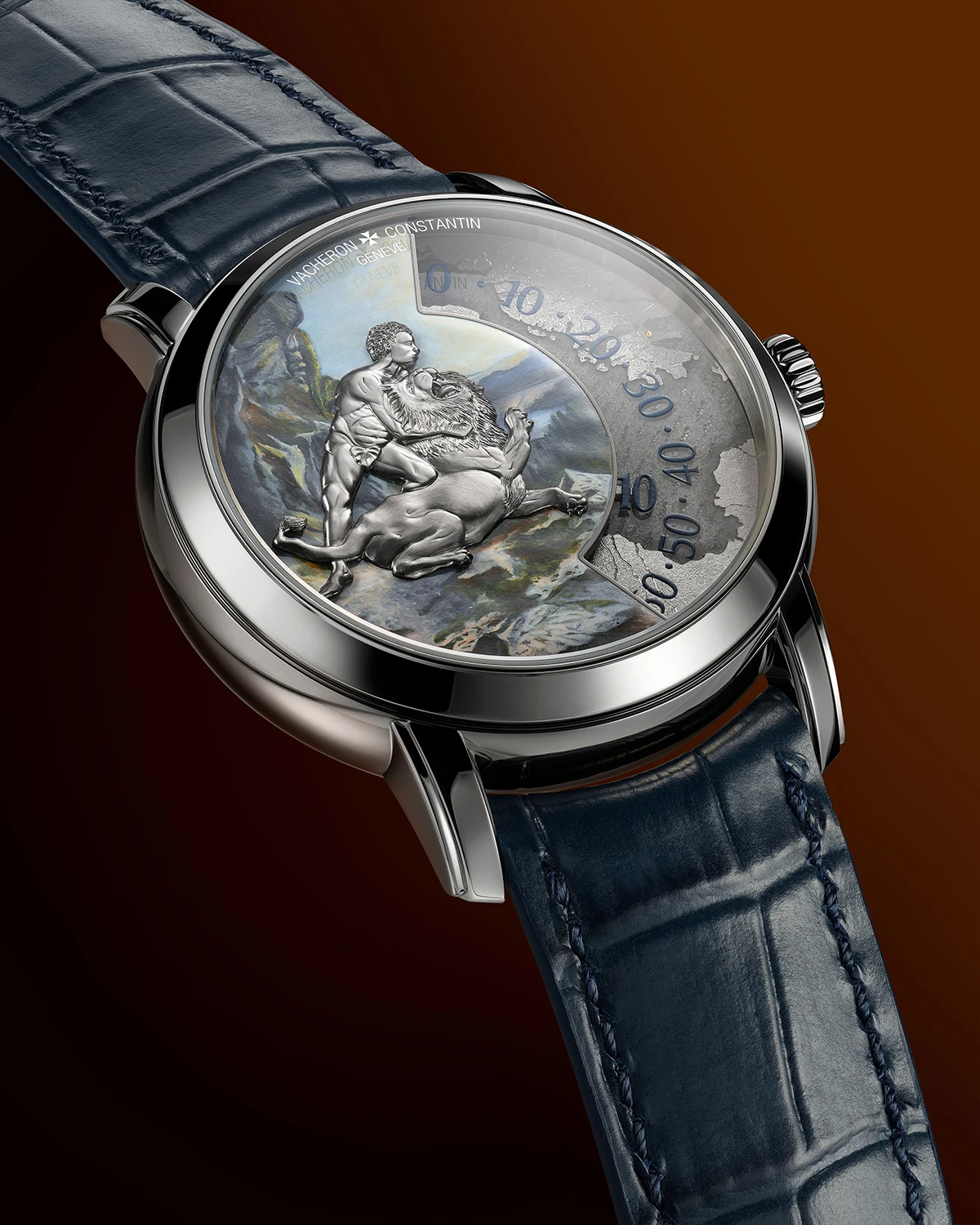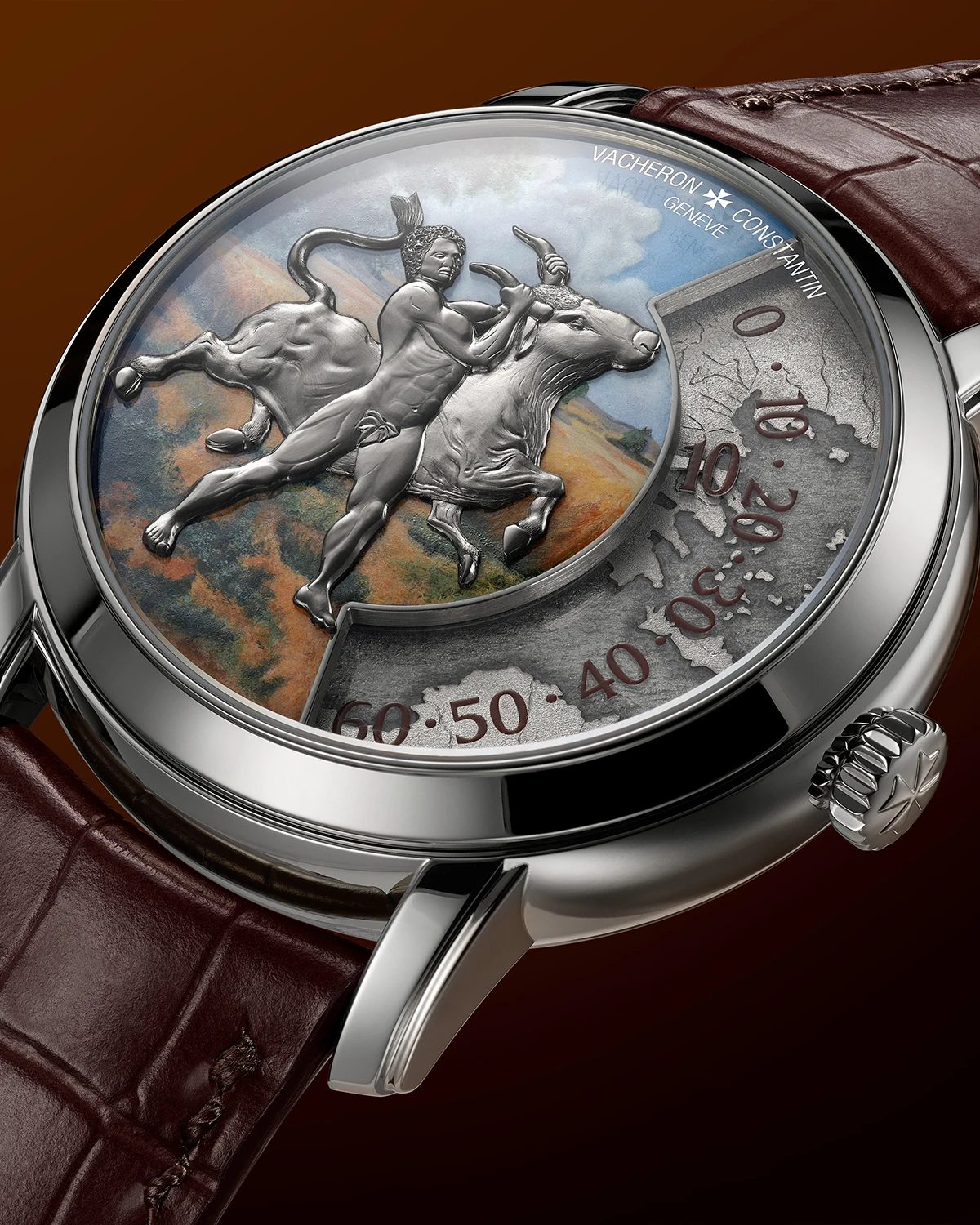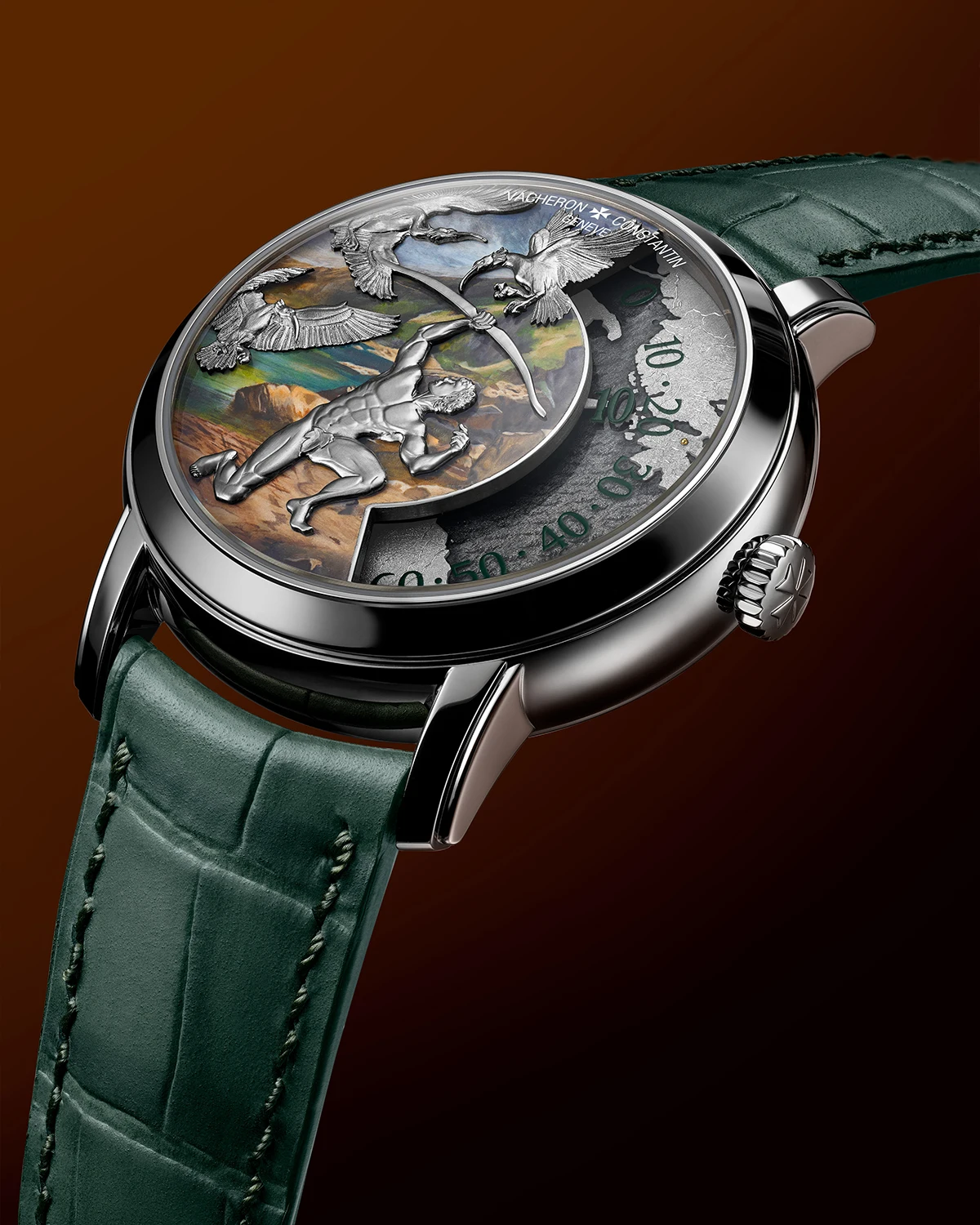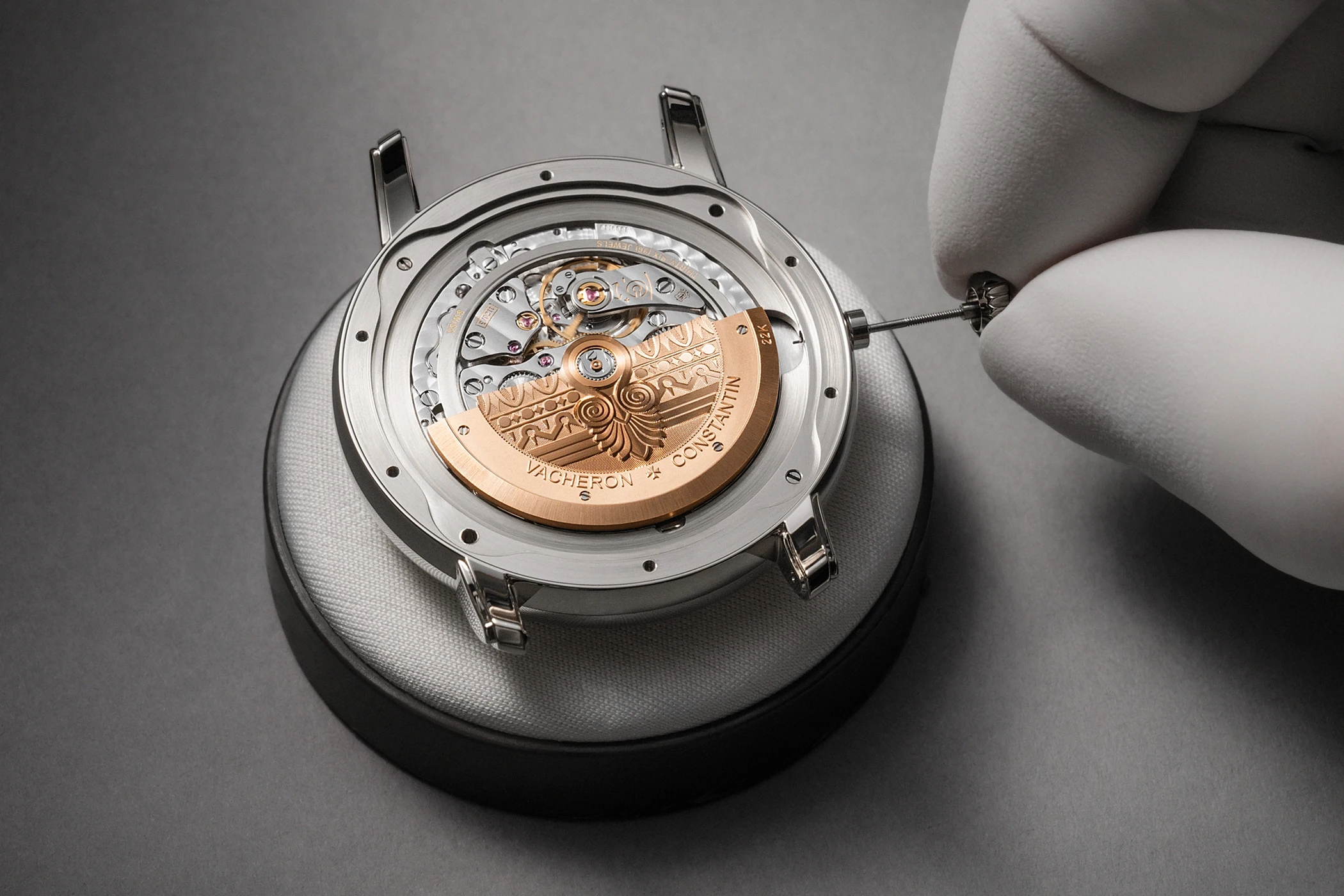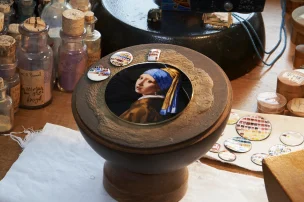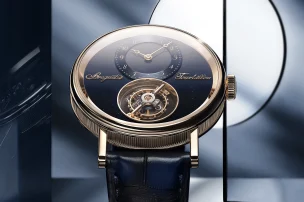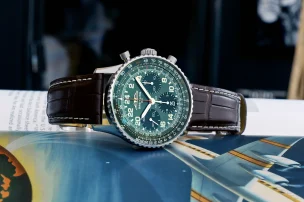

Vacheron Constantin Les Cabinotiers: La Quête Series
To celebrate the maison’s 270th anniversary, Vacheron Constantin has introduced a new series of timepieces called La Quête, crafted in the watchmaker’s revered Les Cabinotiers atelier. It brings together five unique watches that blend astronomy, high-end mechanical watchmaking and exceptional decorative craftsmanship. Each piece stands alone as a work of art, reflecting the Vacheron Constantin’s belief that true watchmaking is not only technical, but also cultural.
Vacheron Constantin’s Les Cabinotiers department sits at the very top of the luxury Swiss watchmaker’s universe. It is a specialised workshop that creates one-of-a-kind timepieces, each made for a single client. Les Cabinotiers watches are crafted with the same care and depth you would expect from a rare book edition or invaluable instrument. Indeed, you could say that Vacheron Constantin is, in many ways, the Stradivarius of high watchmaking: a horology house where technical mastery and artistic expression are inseparable.
Why La Quête?
In choosing the title La Quête (‘the quest’) for this latest series of unique watches, Vacheron Constantin positions the timepieces as not only horological but cultural objects: artistic as well as mechanical expressions of human curiosity and imagination. The brand describes this year’s Les Cabinotiers series as a tribute to astronomy and the ‘odysseys of ancient times’. Uniting grand complications with the decorative crafts, the latest Les Cabinotiers collection once again demonstrates the esteemed atelier’s ability to treat the measurement of time as an art form.
Les Cabinotiers Celestia Astronomical Grand Complication
Homage to Ptolemy and Homage to Copernicus
Let’s start with the one of the most handsome yet complex La Quête watches. The Celestia Astronomical Grand Complication appears in two iterations, each paying tribute to a distinct cosmological model: one rooted in Ptolemy’s geocentric vision, the other in Copernicus’s heliocentric revolution.
Both visions are expressed through engraving across the case, lugs and crown, executed using the champlevé technique to create a relief that subtly maps the planets in motion. The Ptolemy version, in white gold, depicts the Earth at the centre of the universe, while the Copernicus edition, in pink gold, places the Sun as the fixed point around which the planets orbit. Each engraving requires a phenomenal 240 hours of work.
Both watches are driven by the hand-wound calibre 3600, developed over five years and comprising 514 components. At only 8.7 mm thick, it integrates 23 astronomical complications and three distinct readings of time: civil, solar and sidereal. Civil time is displayed conventionally by central hands. Solar time, which varies throughout the year due to the Earth’s elliptical orbit and axial tilt, appears via a running equation of time: a sun-tipped hand that advances ahead of or lags behind civil time, with the two coinciding only four times a year at equinoxes and solstices.
Sidereal time is shown on the reverse of the watch by means of a celestial map made of two sapphire discs, depicting the constellations visible in the Northern Hemisphere and rotating four minutes faster than civil time.
On the dial side, the complications extend beyond the three time scales. A perpetual calendar calibrated until 2100, a precision moon phase requiring correction once every 122 years, sunrise and sunset times with the length of day and night, the seasons and zodiac signs, and a tide indication displaying the relationship of the Sun, Earth and Moon form the front of the watch. On the reverse, a tourbillon shaped as the Maltese cross, the brand’s emblem since 1880, completes a movement designed to frame the astronomical information rather than compete with it. No fewer than six barrels, mounted in series, deliver a mammoth power reserve of three weeks.
Unsurprisingly, the two Celestia Astronomical Grand Complication editions are unique pieces. The Ptolemy version comes in a 45 mm white-gold case with a grained white-gold dial, while the Copernicus edition follows the same dimensions in pink gold. Both are accompanied by a dark blue Mississippiensis alligator strap.
Les Cabinotiers Homage to Epic Warriors Minute Repeater
This series comprises four single-piece minute repeaters, each dedicated to a historical or mythological figure whose deeds have passed into legend: Alexander the Great, Antar, Genghis Khan and Sasaki Moritsuna. Each dial brings together miniature painting in grand feu enamel and hand-engraved backgrounds, framed by fully engraved cases that echo the cultural identity of the figure represented.
On the dial side, each figure is presented in 18-carat 2N yellow gold, engraved to create matte and polished textures, then miniature-painted in translucent layers of enamel requiring six or seven firings at high temperature. Approximately 120 hours of enamelling is needed for each dial, preceded by around 20 hours of engraving. The cases, in white gold for the Alexander and Antar versions, and in yellow gold for Genghis Khan and Moritsuna, are engraved using the taille-douce technique over approximately 160 hours, including the engraving of the minute repeater slide. The pattern of each case thoughtfully responds to its subject: Macedonian spear motifs for Alexander, Arabesques for Antar, Mongolian geometry for Genghis Khan and Japanese waves for Moritsuna.
All four editions house the ultra-thin hand-wound calibre 1731, measuring 3.9 mm in thickness. Developed over four years and named after the birth year of the maison’s founder, Jean-Marc Vacheron, the movement integrates a minute repeater with a silent flying strike governor and offers a 65-hour power reserve. The gongs are directly attached to the case to amplify resonance, with the aim of producing a clear, musical chime of hours, quarters and minutes.
The timepieces measure 41 mm in diameter and 8.59 mm in thickness, and are presented on alligator leather straps: blue for Alexander and Moritsuna, black for Antar, and burgundy for Genghis Khan.
Les Cabinotiers Grand Complication High Jewellery – Moon Dust
Of this year’s Les Cabinotiers creations, the Moon Dust high jewellery watch is the most lavish: a double-sided astronomical grand complication that unites engraving, gem-setting and hand-executed guillochage in a single mermerising piece.
Housed in 18-carat white gold, the watch is powered by the hand-wound calibre 2755 GC16, a movement descended from the ‘Tour de l’Île’ created for the maison’s 250th anniversary in 2005. Comprising 839 components and just 12.15 mm thick, it brings together 16 complications, including a minute repeater, tourbillon, perpetual calendar, equation of time, sunrise and sunset times, sidereal time, a rotating celestial chart, moonphase and moon age.
The minute repeater is of particular note (pardon the pun). It is governed by a silent centripetal flying strike regulator; an ingenious system using two weights to create a controlled ‘engine-brake’ effect on the chiming mechanism. The result is a clear, stable tempo to the hours, quarters and minutes when sounded on demand. The front dial displays the perpetual calendar across three counters, with the tourbillon revealed at six o’clock, its Maltese cross-shaped cage completing one rotation per minute and serving as the small seconds. The equation of time is shown on the upper left, while sunrise and sunset times sit to either side of the tourbillon.
Turn the watch over, and the tone shifts from terrestrial timekeeping to astronomical observation. Sidereal time – based on the Earth’s rotation relative to the stars rather than the sun – is read via an open-worked fixed dial, beneath which a disc of Northern Hemisphere constellations rotates four minutes faster per day than civil time. Concentric scales mark the zodiac, the seasons, and the solstices and equinoxes, while a secondary hand indicates the age of the moon.
Meanwhile, measuring 47 mm in diameter and a rather whopping 19.10 mm in height, the case is purpose-built to optimise acoustic resonance for the repeater while providing surface area for decoration. Across the case, lugs and clasp, 184 baguette-cut diamonds totalling approximately 8.68 carats are rail-set in precise rows, with a further 165 brilliant-cut diamonds (0.92 carats) applied in a snow-setting technique that scatters stones of nine sizes to create the shimmer of lunar powder.
The case flanks are engraved using taille-douce, depicting sunrays breaking through clouds on one side and a planetary vista from the surface of the Moon on the other. Guillochage on the dial radiates beneath a blue PVD finish, evoking the expanse of the cosmos and framed by black opaline details.
In total, the gem-setting alone demands around 230 hours of work, and the engraving a further 180 – figures that underline the level of craft involved even before considering the calibre within. Fitted with a dark blue alligator strap and folding clasp set with baguette-cut diamonds, this unique piece certainly sits at the most opulent frontier of Vacheron Constantin’s watchmaking.
Les Cabinotiers Armillary Tourbillon – Myth of the Pleiades
The Les Cabinotiers Armillary Tourbillon models never fail to impress, and this year is no different. Inspired by the Greek myth in which the Pleiades, daughters of Atlas and Pleione, were transformed into stars and placed within the constellation of Taurus, this watch is an example of Vacheron Constantin’s ability to integrate mechanical innovation with narrative engraving.
The 18-carat pink gold case is hand-engraved in bas-relief to depict, on one side, Orion pursuing the Pleiades, and on the other, the ship Argo navigating by the Pleiades with Taurus as guide. The stunning engraving extends across the 20 mm height of the unique piece’s case and required approximately 450 hours of work. Ten brilliant-cut diamonds, representing the stars of the Pleiades visible to the naked eye, are set discreetly into the engraving.
As seen in previous models, the watch is powered by the hand-wound calibre 1990, containing 299 components and protected by four patents. It combines a bi-axial armillary tourbillon with retrograde hours and minutes. The retrograde hands return instantaneously to zero at midday and midnight, a mechanism controlled by a single minute cam. The tourbillon, comprising two aluminium cages rotating on separate axes once per minute, evokes the structure of the historical armillary sphere. It uses a spherical balance spring and a titanium anchor with diamond-coated pallets to reduce friction and improve isochronism, contributing to chronometric performance over a 60-hour power reserve at 18,000 vibrations per hour.
The dial is partially open-worked to reveal the mechanism, with a sunray satin finish in a soft champagne tone and blue accents for the retrograde scales and hands. The watch measures 45 mm in diameter and 20.13 mm in thickness, and is fitted with a dark blue alligator strap.
Les Cabinotiers Métiers d’Art – The Labours of Heracles
Last but not least, Heracles (or Hercules to those more well-versed in Roman mythology), whose twelve Labours have shaped Western storytelling for over two millennia, has become the subject of four unique Métiers d’Art watches: the Nemean Lion, the Lernaean Hydra, the Stymphalian Birds and the Cretan Bull.
The watches showcase a dual-level dial construction in white gold. The lower right-hand sector is hand-engraved using taille-douce to depict a map of Greece, then coated with translucent grand feu enamel in four layers, fired after each application. The coastlines and topography are further engraved once the enamel has been applied – a delicate process that requires precision to avoid cracking the enamel. A small cabochon in 18-carat yellow gold, only 0.4 mm in diameter, marks the geographical location of the ‘Labour’.
The upper left section of the dial carries a grand feu miniature painting of the landscape in which the Labour took place, executed over ten layers of enamel on a base of white and opalescent enamel. The figure of Heracles is sculpted in three-dimensional relief from 18-carat white gold, only half a millimetre thick but modelled to give volume through micro-engraving. Each figure, whether battling lion, serpent, bird or bull, requires approximately 40 hours of engraving.
Inside the 40 mm white-gold case, Vacheron Constantin has opted for the manufacture calibre 1120 AT, a self-winding movement measuring 5.45 mm thick, with 205 components and a 40-hour power reserve. It drives a satellite hours display, in which the hours rotate on three carousels across a 120-degree minutes scale. The movement is finished with perlage, Côtes de Genève and anglage, and features a 22-carat pink gold oscillating weight decorated with a tapestry motif inspired by Greek friezes.
The four Les Cabinotiers Heracles pieces come with alligator straps chosen to complement the enamel palette: dark blue for the Nemean Lion, blue for the Hydra, green for the Stymphalian Birds and brown for the Cretan Bull. True to form, each is a unique piece.
